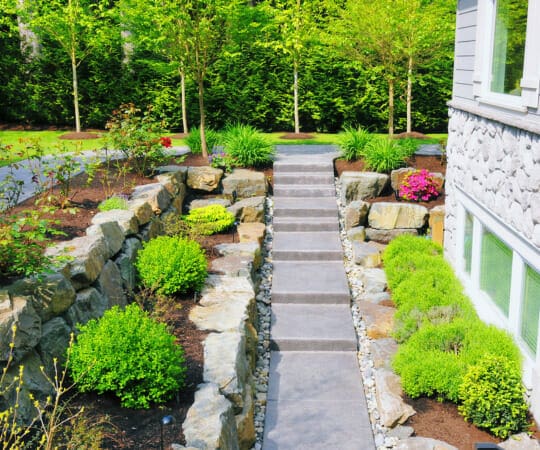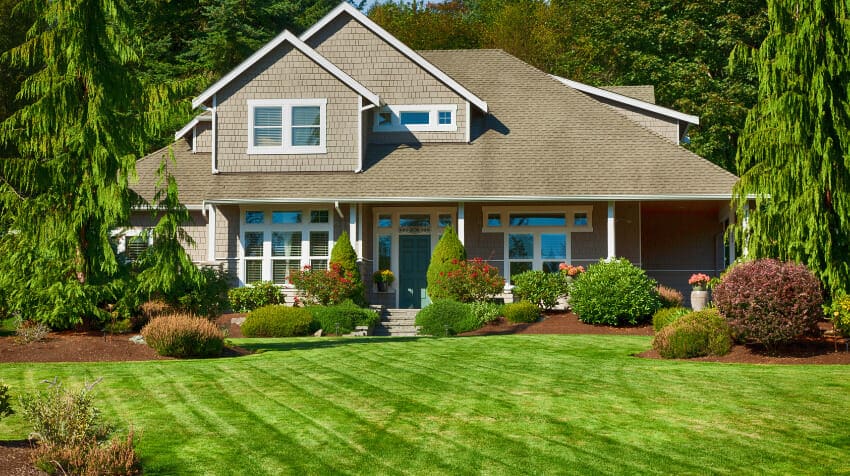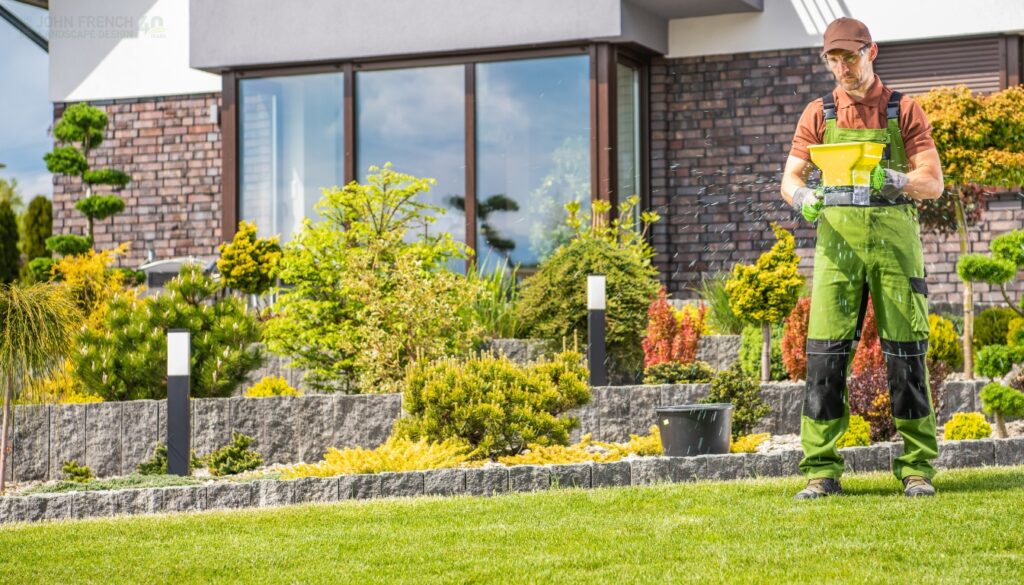Unlocking the Beauty of Outdoor Spaces: A Journey through Landscape Architecture
Do you ever find yourself gazing out at the natural world around you, marveling at its beauty and intricacy? Perhaps you’ve even thought about how to create a space that seamlessly blends into the landscape, utilizing the natural elements to enhance its design.
If so, then landscape architecture may be just the field for you! Landscape architecture is a unique blend of art and science that focuses on designing outdoor spaces that are both functional and aesthetically pleasing.
From lush gardens to sprawling parks, landscape architects work with nature to create environments that not only look beautiful but also serve a purpose.
Whether you’re interested in pursuing a career in this fascinating field or simply looking to learn more about it, this article will take you on a journey through the world of landscape architecture – where art meets nature!
The Basics of Landscape Architecture
Get ready to dive into the fundamentals of designing outdoor spaces that seamlessly blend with their environment. In landscape architecture, design principles and site analysis are crucial elements in creating a successful project.
A well-thought-out plan involves understanding the natural features of a site, such as soil composition, topography, vegetation types, and climate conditions. Design principles are essential in creating a cohesive and aesthetically pleasing space.
These principles include balance, rhythm, unity, contrast, scale/proportion and focalization. When applied correctly to the site analysis data, they can create harmony between nature and the built environment. The goal is to create a functional space that maximizes its potential while minimizing environmental impact.
Now let’s explore how these design principles integrate with the elements of landscape design.
Elements of Landscape Design
The Elements of Landscape Design are like the beating heart of any outdoor space, pumping vitality and energy into every corner. Plant selection is one of the most important elements as it creates the foundation for a beautiful landscape. From deciduous to evergreen, your plant choices should be based on factors such as climate, soil type, and sun exposure.
Color palettes also play a crucial role in creating harmony within your design. By choosing colors that complement each other and the surrounding environment, you can create an inviting atmosphere that draws people in.
But it’s not just about plants – hardscaping and water features are equally important elements to consider. Hardscaping refers to any non-living element in your landscape design such as patios, walkways, and retaining walls. These features provide structure and balance to your outdoor space while also helping with drainage issues.
Water features such as fountains or ponds add tranquility to your landscape by providing soothing sounds and visual interest. When used together with other elements of design, these elements can create a truly breathtaking outdoor space.
As you move from understanding the basics of landscape architecture towards exploring innovative projects within this field, keep in mind how all these different elements work together to create something special.

Innovative Landscape Architecture Projects
You’re going to be blown away by the awe-inspiring projects that push the boundaries of outdoor design, leaving you feeling inspired and amazed.
From incorporating sustainable materials to creating interactive installations, landscape architects are taking their designs to the next level.
Take for example The High Line in New York City. This innovative project transformed a disused railroad into a vibrant public park that stretches over a mile long. The designers used sustainable materials such as recycled railroad tracks and sustainably sourced wood to create an elevated garden oasis in the middle of Manhattan.
Another remarkable project is The Living Water Park in China. This park not only provides recreational space for visitors but also serves as an educational platform on water conservation and management. It features interactive installations such as a rain garden, wetland, and permeable pavement that help filter pollutants from stormwater runoff before it enters nearby rivers.
These projects illustrate how landscape architects can create functional spaces that not only look beautiful but also serve an important purpose for our environment and communities.
As you can see, innovative landscape architecture projects go beyond just aesthetics; they incorporate sustainability and functionality into their designs. These benefits prove why landscape architecture is essential in today’s world where urbanization continues to threaten natural habitats.
Benefits of Landscape Architecture
Are you aware of the amazing benefits that landscape architecture can bring to your life? By designing and creating green spaces, landscape architects help improve both your mental and physical health.
In addition, they play a crucial role in enhancing community spaces, making them more inviting and enjoyable for everyone.
Finally, let’s not forget about the importance of promoting sustainability through thoughtful design choices that protect our environment for generations to come.
Improving Mental and Physical Health
Improving your mental and physical health can be a walk in the park, quite literally. Landscape architecture has a significant impact on the well-being of individuals who engage with it.
Studies have shown that nature therapy, a form of treatment that involves spending time in natural environments, can decrease stress levels and improve mood. Biophilic design, which incorporates natural elements into man-made spaces, has also been found to have similar effects.
Incorporating green spaces into urban environments has become increasingly popular as people recognize the benefits they provide. Parks and gardens offer opportunities for physical activity such as walking or jogging, which can reduce the risk of chronic diseases like heart disease and diabetes. They also provide places for social interaction and relaxation, encouraging community cohesion.
Enhancing community spaces not only benefits individuals but also contributes to creating more vibrant and livable cities overall.
Enhancing Community Spaces
Enhancing community spaces can transform dull and lifeless urban areas into vibrant hubs of social interaction, promoting a sense of belonging and unity among residents. Collaborative initiatives involving landscape architects, local authorities, and community members can create spaces that reflect the unique character and artistic expression of the area. By incorporating public art installations and greenery in public parks or plazas, these spaces become more inviting to residents who may have previously avoided them.
Moreover, enhancing community spaces through sustainable design practices can promote environmental conservation while also benefiting the community. For instance, rain gardens or bioswales can be installed as part of a larger stormwater management plan to reduce runoff pollution while providing an aesthetically pleasing space for residents to enjoy. Promoting sustainability in this way not only benefits the environment but also strengthens the connection between people and nature.
Promoting Sustainability
Promoting sustainability in community spaces can transform them into environmentally conscious hubs of social interaction, benefiting both residents and the planet.
Green infrastructure and sustainable design are key elements that landscape architects utilize to achieve this goal. For instance, green roofs and walls can reduce energy consumption by providing natural insulation while also mitigating stormwater runoff. Additionally, incorporating native plants and materials into community spaces not only benefits the ecosystem but also promotes a sense of place for residents.
Sustainable design extends beyond environmental considerations to include economic and social factors as well. Landscape architects consider the long-term maintenance costs associated with implementing green infrastructure, as well as how it will impact the local economy through job creation or tourism opportunities. Moreover, designing community spaces that encourage physical activity and social interaction can improve public health outcomes for residents.
By prioritizing sustainability in landscape architecture, we can establish a healthier future for our communities and our planet.
The future of landscape architecture lies in striving towards even more innovative approaches to promote sustainability while continuing to prioritize the needs of communities. One potential avenue is utilizing technology such as virtual reality to create immersive experiences that allow designers to test their ideas before implementation.
As we continue to address global challenges such as climate change and urbanization, landscape architecture will play an increasingly vital role in creating resilient communities that benefit both people and the environment.

Future of Landscape Architecture
Let’s take a look at what the future holds for landscape architecture. With technology integration becoming more commonplace in all industries, it’s no surprise that this field will continue to see advancements in the way projects are designed and executed.
From digital mapping tools to augmented reality, technology will allow designers to create more accurate and detailed plans while also giving clients a better understanding of how their project will look in real life.
In addition to technological advancements, landscape architecture will also have a growing global impact as sustainability becomes an even greater concern worldwide. Designers will need to consider not only the environment they’re working with but also the culture and community surrounding it.
The focus on creating sustainable and equitable spaces that benefit both people and nature will become increasingly important, requiring designers to collaborate with experts from various fields such as ecology, sociology, and engineering.
As we move towards a greener future, landscape architects have an important role to play in shaping our world for the better.
Frequently Asked Questions
What qualifications are necessary to become a landscape architect?
Did you know that only around 50% of landscape architecture graduates end up working as licensed landscape architects? That’s because, in addition to completing a landscape architecture education program, individuals must also meet specific licensing requirements to practice professionally.
These requirements typically include passing the Landscape Architect Registration Examination and obtaining a state license. Additionally, continuing education is often necessary to maintain licensure.
So if you’re interested in pursuing a career in this field, be prepared for rigorous education and ongoing professional development. But with dedication, passion for design, and love for nature, becoming a licensed landscape architect can be an incredibly rewarding experience.
How has technology impacted the field of landscape architecture?
When it comes to the field of landscape architecture, technology has had a significant impact. Virtual reality simulations have allowed designers to create and experience landscapes in a way that was once impossible. This technology allows for a more immersive experience, enabling designers to test different designs and see how they will look before actually building them.
Additionally, green roof technology has become increasingly popular in recent years as an environmentally sustainable solution for urban areas. With the help of technology, landscape architects can design and plan these green roofs with ease, taking into account factors such as water drainage and plant selection.
Overall, technology has provided landscape architects with new tools to create innovative and sustainable designs that benefit both people and nature alike.
What are some common mistakes people make when attempting DIY landscape design?
You’ve decided to take on a DIY landscape design project, but before you start digging up your yard, it’s important to note some common mistakes that people make in this process.
One adage to remember is ‘measure twice, cut once.’ This rings true in the world of landscaping as well.
One of the biggest pitfalls is not measuring accurately, which can lead to plants being too close together or not having enough space for growth.
Another mistake is not considering the amount of sunlight and shade your yard receives throughout the day, leading to plants dying due to lack of proper conditions.
Additionally, choosing plants solely based on appearance without researching their specific needs can lead to disappointment when they don’t thrive in your environment.
By avoiding these common DIY mistakes and taking time to properly plan and research your project, you can create a beautiful outdoor space that will be enjoyable for years to come.
How do landscape architects incorporate sustainability into their designs?
When it comes to incorporating sustainability into landscape architecture designs, green infrastructure and sustainable materials are key.
Green infrastructure refers to integrating natural systems into a design, such as using rain gardens or bioswales for stormwater management.
Sustainable materials focus on utilizing resources that have a low impact on the environment and human health, like recycled or locally sourced materials.
Landscape architects must also consider the long-term maintenance and management of their designs to ensure continued sustainability.
By prioritizing these elements in their designs, landscape architects can create beautiful and functional spaces while also benefiting the planet.
How do cultural and societal values impact landscape architecture?
Imagine a world where the cultural influences of society weren’t taken into account when designing landscapes. It seems impossible, right?
That’s because landscape architecture is heavily influenced by cultural and societal values. Environmental ethics are important in this field as well, but they can only go so far without considering the people who will interact with these spaces.
Landscape architects must take into account the history, traditions, and beliefs of the communities they’re working with to create designs that truly meet their needs.
By doing so, they can create spaces that not only preserve and enhance nature but also serve as a reflection of the cultures they represent.
Conclusion
Congratulations, you’ve just embarked on a journey of exploring the world of landscape architecture! From learning the basics to discovering innovative projects that will leave you in awe, you’ve gained insight into this fascinating field that blends art and nature seamlessly.
As you reflect on the benefits of landscape architecture, it’s hard not to feel inspired by the way it enhances our environment. Whether it’s creating a serene outdoor space or revamping an entire urban area, landscape architects play a critical role in shaping our surroundings. They bring creativity and vision to their work, often incorporating sustainable practices that promote ecological health.
As for the future of landscape architecture, there is much to be excited about. With increasing focus on sustainability and green spaces, we can expect more innovative and environmentally conscious designs. Landscape architects will continue to push boundaries and challenge norms as they strive to create spaces that are not only beautiful but also functional and sustainable.
In conclusion, whether you’re an aspiring landscape architect or simply someone who appreciates the beauty of nature, there’s no denying the impact this field has on our daily lives. Through your newfound knowledge, may you gain a deeper appreciation for the importance of art meeting nature in landscape architecture.
Related Sources



